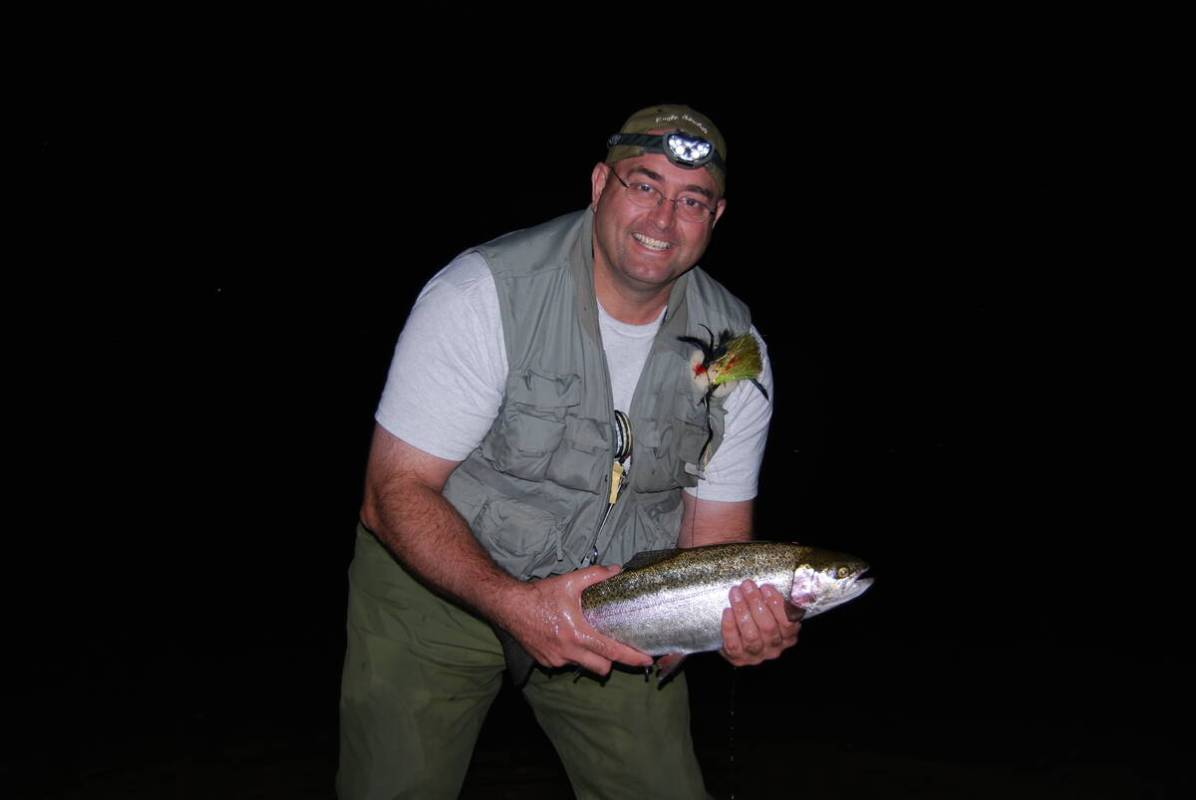It’s wise to pay attention to fish consumption advisories

After reading my recent column about ice fishing opportunities in Nevada, a reader wrote to express concern about a fish consumption advisory at Comins Reservoir, one of the popular fishing destinations I highlighted in the column.
“I just wanted to remind you about the mercury in Comins from the old mine leachings,” he wrote. “Not intending to be a downer, but caution might be advised.”
A closer look shows that Comins is just one of many state waters with fish consumption advisories. A list can be found online at ndow.org and includes recommendations for consuming the various species that can be taken from those waters.
According to the Environmental Protection Agency, “a consumption advisory is a recommendation to limit or avoid eating certain species of fish or shellfish caught from specific water bodies or types of water bodies due to contamination.”
While the presence of mercury certainly is cause for exercising caution, it is not the only reason a consumption advisory might be issued for a particular body of water. Other pollutants, such as chemicals, bacteria or even certain algal blooms also might lead to health authorities to recommend limits or even close waters in extreme cases.
The purpose of these advisories is to help people make informed decisions about where to fish or harvest shellfish, says the EPA. Such advisories can be issued by agencies at the federal, state, territorial or tribal level and can apply to the general public or specific groups of people who might be considered at risk. Those groups include people who eat a lot of fish, elderly men and women, pregnant women, nursing mothers and children.
Mercury is a neurotoxin, so it has the potential to damage nerve tissue if its levels are high enough. The risk from consuming mercury by eating fish may include harm to an unborn baby or a young child’s developing nervous system, notes the EPA, which also says that “nearly all fish and shellfish contain traces of mercury, no matter what body of water they come from.”
The irony is that fish is an important part of a healthy diet. According to the U.S. Food and Drug Administration, “Fish intake during pregnancy is recommended because moderate scientific evidence shows it can help your baby’s cognitive development,” and “Strong evidence shows that eating fish, as part of a healthy eating pattern, may have heart health benefits.”
So, where does that leave us?
Perhaps an understanding of the nature of mercury in the natural food chain will help to answer that question. Mercury is a naturally occurring element, but human activities have helped to distribute it through the atmosphere.
When mercury settles in waterways it makes its way into the food chain where certain bacteria convert it into methyl mercury, which then accumulates in fish tissue. The problem is that methyl mercury does not go away. It is carried up the food chain from one fish to another as one fish eats another.
That is why the strictest consumption recommendations are associated with large apex predators, the fish at the top of the food chain. In Comins Lake, the apex predators are largemouth bass and northern pike.
On the other hand, fish that spend the shortest length of time in a particular water and are lower on the food chain will generally have the lowest concentration of mercury. Stocked rainbow trout fit into that category.
The FDA says you do not have to stop eating fish altogether but does offer recommendations for serving size and a list of the best fish choices for consumption. You can find them at www.fda.gov/food/consumers/advice-about-eating-fish.
Freelance writer Doug Nielsen is a conservation educator for the Nevada Department of Wildlife. His “In the Outdoors” column is not affiliated with or endorsed by the NDOW. Any opinions he states in his column are his own. Find him on Facebook at @dougwritesoutdoors. He can be reached at intheoutdoorslv@gmail.com